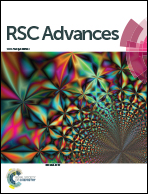Improved understanding of particle migration modes in spiral inertial microfluidic devices
Abstract
We investigated the migration dynamics of particles with multi-scale sizes in a classical spiral inertial microfluidic device. Our experimental results demonstrate that in curved low-aspect-ratio channels particles of different confinement ratios behave in three migration modes, including focusing, rough focusing, and non-focusing. The migration behaviors of specific-sized particles can be switched flexibly between these three modes by redesigning the characteristic length of the channel cross-section. The mechanics underlying these migration modes were then interpreted in terms of the competition between Brownian motion, inertial lift effects and secondary flow effects. The detailed particle migration dynamics in each migration mode were characterized over a wide range of flow rates to further the understanding of multi-mode migration mechanisms in Dean-coupled inertial flows. Finally, the effectiveness of the discovered three-mode-migration theory was validated in an experiment of bioparticles with polydisperse sizes. The obtained results in our work would provide valuable insights into the flexible control of particle migration and the separation of multi-scale particles in curved channel systems.


 Please wait while we load your content...
Please wait while we load your content...